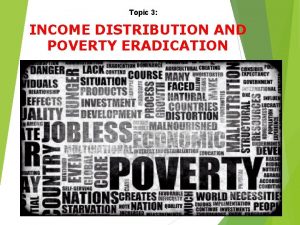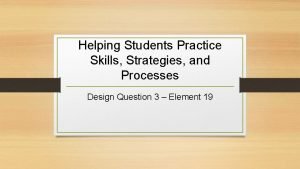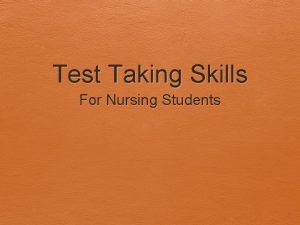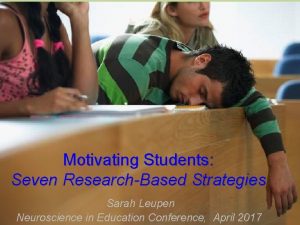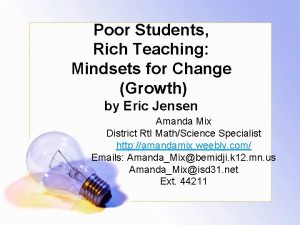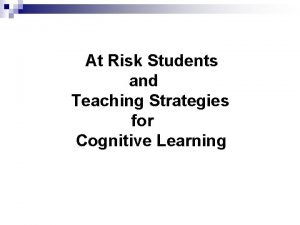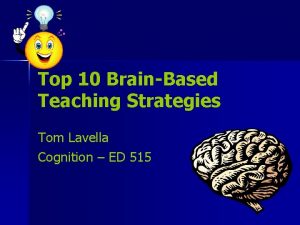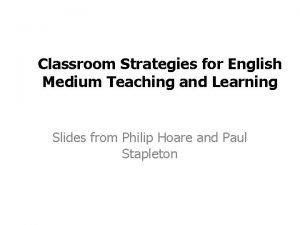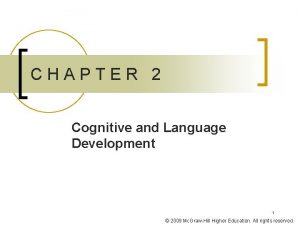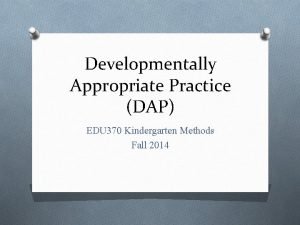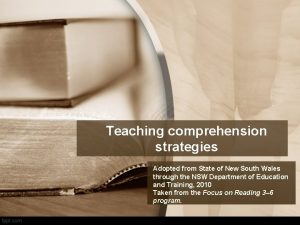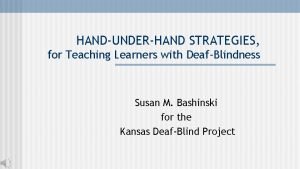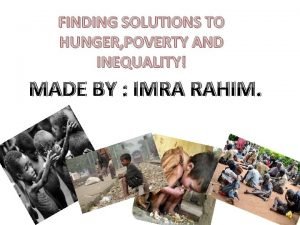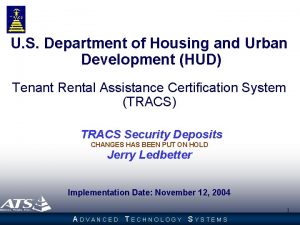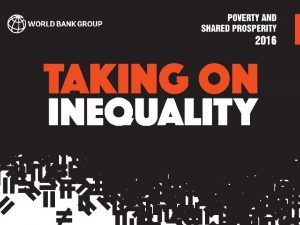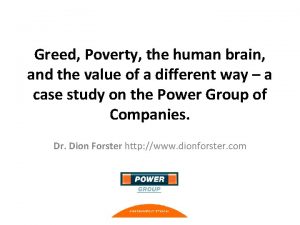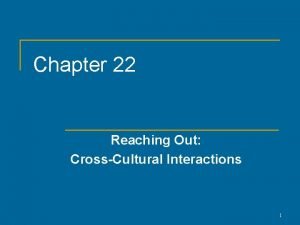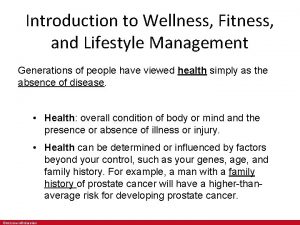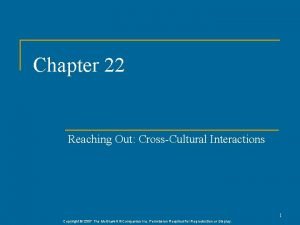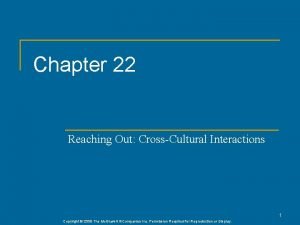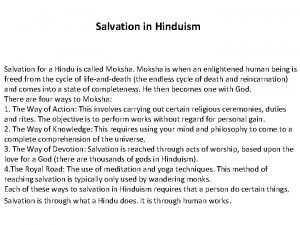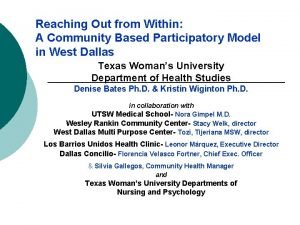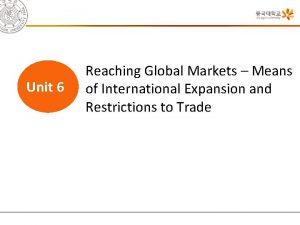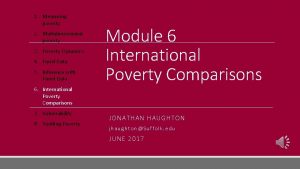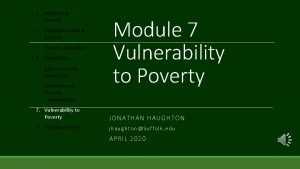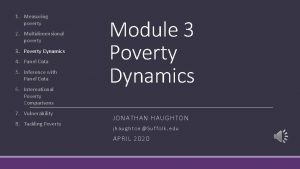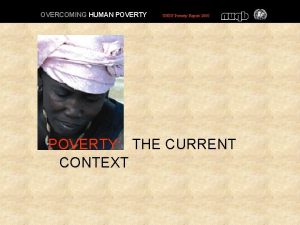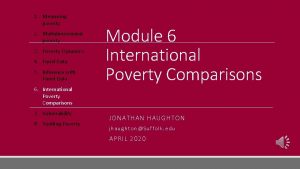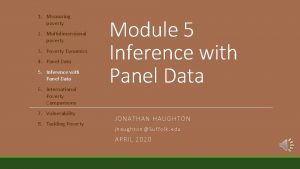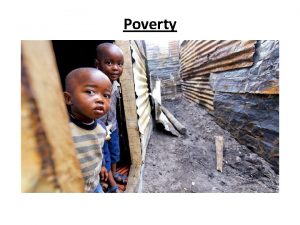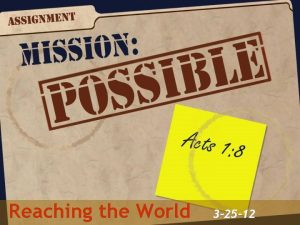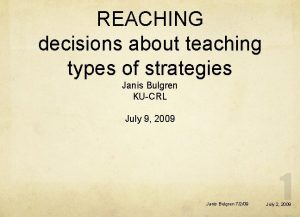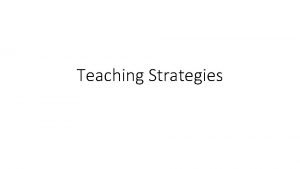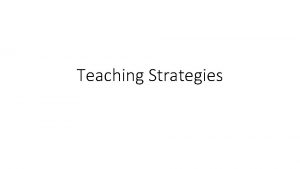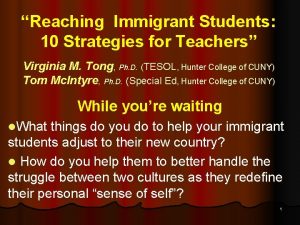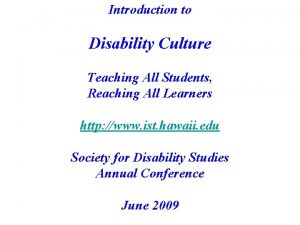Reaching and Teaching Students in Poverty Strategies for










































































- Slides: 74

Reaching and Teaching Students in Poverty: Strategies for Erasing the Opportunity Gap by Paul C. Gorski gorski@Ed. Change. org

An Initial Reflection Why are poor people poor? Why are wealthy people wealthy? 2

How I Know “The Poor” Are Not “The Problem” ***

How I Know Teachers Can Be a Big Part of the Solution ***

Warming Up A Short Quiz 5

Quiz A Princeton study of elite universities found that legacy applicants—people, usually white and wealthy, with a parent or grandparent who attended the institution—are far more privileged by legacy status than applicants of color are by affirmative action policies. The study determined that legacy status was equivalent to how much of a boost to an applicant’s SAT score? ◦ 20 points ◦ 90 points ◦ 160 points 6

Quiz A Princeton study of elite universities found that legacy applicants—people, usually white and wealthy, with a parent or grandparent who attended the institution—are far more privileged by legacy status than applicants of color are by affirmative action policies. The study determined that legacy status was equivalent to how much of a boost to an applicant’s SAT score? ◦ 20 points ◦ 90 points ◦ 160 points 7

Quiz According to the U. S. Census Bureau, how much more likely are African American and Latino mortgage applicants to be turned down for a loan than white applicants, even after controlling for employment, financial, and neighborhood factors? ◦ 30% more likely ◦ 60% more likely ◦ 90% more likely 8

Quiz According to the U. S. Census Bureau, how much more likely are African American and Latino mortgage applicants to be turned down for a loan than white applicants, even after controlling for employment, financial, and neighborhood factors? ◦ 30% more likely ◦ 60% more likely ◦ 90% more likely 9

Quiz A majority of poor people in the U. S. live in: ◦ urban areas ◦ suburban areas ◦ rural areas 10

Quiz A majority of poor people in the U. S. live in: ◦ urban areas ◦ suburban areas ◦ rural areas 11

Quiz How often is a child born into poverty in the United States? ◦ Every 32 seconds ◦ Every 3 minutes, 2 seconds ◦ Every 32 minutes 12

Quiz How often is a child born into poverty in the United States? ◦ Every 32 seconds ◦ Every 3 minutes, 2 seconds ◦ Every 32 minutes 13

Quiz Who is more likely to be addicted to drugs or alcohol? ◦ Poor people ◦ Middle class people ◦ Wealthy people 14

Quiz Who is more likely to be addicted to drugs or alcohol? ◦ Poor people ◦ Middle class people ◦ Wealthy people 15

Quiz What proportion of homeless men in the United States are military veterans? ◦ 1 in 20 ◦ 1 in 12 ◦ 1 in 4 16

Quiz What proportion of homeless men in the United States are military veterans? ◦ 1 in 20 ◦ 1 in 12 ◦ 1 in 4 17

Quiz The three richest people in the world have as much wealth as: ◦ the 8 poorest countries ◦ the 48 poorest countries ◦ the 308 poorest countries 18

Quiz The three richest people in the world have as much wealth as: ◦ the 8 poorest countries ◦ the 48 poorest countries ◦ the 308 poorest countries *** 19

Starting Assumptions 1. Poor people bear the brunt of almost every imaginable social ill in the U. S. 2. All people, regardless of class status, deserve access to basic human rights 3. Inequities in our society mean all people don’t have this access 20

Starting Assumptions (cont’d) 4. It is not every individual’s responsibility to eradicate global poverty 5. However, if we don’t poverty, we cannot understand families and students in poverty 21

The Most Practical Note If we start with the belief that poor people are poor because poor people are deficient, we already have lost. The single most practical strategy for every one of us: Let go of the stereotypes… 22

The Most Formidable Challenge The shifts necessary to bolster the educational outcomes of low-income students are almost entirely ideological. There is no instructional “silver bullet. ” (But there are some pretty good strategies!) 23

Part II: Ideology Shift Stereotypers Are Us: Stereotypes of Low-Income People and Other Cognitive Barriers to Progress

Stereotypers Are Us �Brainstorm all the stereotypes you know about low-income people ◦ And note where they come from 25

Stereotypers Are Us Stereotype: Laziness Ah, but: A vast majority of poor people do work (CDF, 2008). According to the Economic Policy Institute (2002), poor working adults spend more hours working per week on average than their wealthier counterparts. 26

Stereotypers Are Us Stereotype: Don’t Value Education Ah, but: Low-income parents have the exact same attitudes about education as wealthy parents (Compton-Lilly, 2003; Lareau & Horvat, 1999; Li, 2010; Leichter, 1978; Varenne & Mc. Dermott, 1986). (More on this later…) 27

Stereotypers Are Us Stereotype: Substance Abuse Ah, but: Alcohol abuse is far more prevalent among wealthy people than poor people (Galea, Ahern, Tracy, & Vlahov, 2007; Humensky, 2010). And drug use equally distributed across poor, middle class, and wealthy communities (Saxe, Kadushin, Tighe, Rindskopf, & Beveridge, 2001). 28

Stereotypers Are Us Stereotype: Crime and Violence Ah, but: Poor people do not commit more crime than wealthy people—they only commit more visible crime (Dunaway et al, 2000). Furthermore, white collar crime results in much greater economic (and life) losses than so-called “violent” crime. 29

Stereotypers Are Us Stereotype: Language-Deficient Ah, but: Linguists have known for decades that all varieties of English (such as “Black English vernacular” or Appalachian varieties) are equally complex in structure and grammar (Gee, 2004; Hess, 1974; Miller, Cho, & Bracey, 2005; Terry et al, 2010). 30

Stereotypers Are Us Stereotype: Bad Parents Ah, but: Research has continued to show that low-income parents care just as much about their children, and work just has hard—or harder—to advocate for their children, as wealthier parents. 31

Stereotypers Are Us The nature of stereotyping Selective evidence-gathering - In-group favor - My dad and road rage 32

Part IV Considering the Popular Perspectives: the “Culture of Poverty” and Deficit Ideology

The ‘Culture’ or ‘Mindset’ of Poverty �What is it? �Who made it up? �What the research says �Why it’s dangerous Silliness: My grandma and Somali children 34

Deficit View Is… �A perspective that explains outcome inequalities as resulting from supposed moral, intellectual, and cultural deficiencies in disenfranchised communities and individuals ◦ The “achievement gap” ◦ The “glass ceiling”

Deficit View: A Micro-Example

Begin with a Stereotype “Low-income families do not value education. ”

Use that Stereotype to Explain & Justify an Outcome Inequality “Low-income students do not do as well in school as their wealthier peers because they do not value education. ” And “If only low-income families cared more about education, the economic achievement gap would not exist. ”

Ignore the Fact that This Is Untrue See, for example: Compton-Lilly, 2003 Lareau & Horvat, 1999 Leichter, 1978

Gather Evidence Selectively Conveniently forget: �Funding disparities �Choice disparities �Curricular & pedagogical disparities �And so on… Or even: �The scarcity of living wage jobs �Lack of access to healthcare �And so on…

Develop Strategies through the Lens of This Ideology �Parenting classes for low-income families �Mentor programs for low-income students �Tutoring programs for low-income students �And so on…

Never Address (or Acknowledge) Underlying Inequities �No reflection on what we’re doing or the biases or inequities in our schools and classrooms… �And so on

Part V: Understanding the Challenges of Low-Income Families

Pre-School �Less access �When they have access, it’s to lowerquality pre-school �According to brain research, this is critical because of the cognitive development that happens during preschool years (Duncan, Ludwig, & Magnuson, 2007) 44

Pollution �Air and water in low-income neighborhoods more polluted �More likely to live near hazardous production and storage sites (Walker et al, 2005) 45

Neighborhood Factors �Low-income neighborhoods more likely to have lower-quality social, municipal, and local services; greater traffic volume, fewer playgrounds; less green space (NCTAF, 2004) 46

Health �Less access to health care (Koenig, 2007) �Less access to preventive measures (Pampel et al, 2010) �Less access to prenatal care (Temple et al, 2010) �Higher levels of chronic stress and depression (Wadsworth et al, 2008) �Less access to healthy foods (Pampel et al, 2010) 47

In School, the “Great Equalizer”: This opportunity gap is characterized by the lack of access to: Quality preschool Adequately funded schools School nurses, counselors, and other school support services Affirming school environments (bullying) High academic expectations Higher-order, engaging pedagogies Opportunities for family engagement 48

Also: �Safe and affordable housing �An affirming society �Recreational opportunities �And on and on Part of the problem with the “culture of poverty” model is that it is largely silent on these conditions—it distracts us from them… 49

Thoughts… These are the reasons for outcome inequalities, not cultural deficiencies (Depere et al, 2010): “Thus, children raised in advantaged neighborhoods appear to receive higher quality child care and to attend more advantaged schools, even when family characteristics, such as the quality of the home environment, are held constant. In turn, access to advantaged institutions may explain why children in comparatively advantaged neighborhoods tended to have higher vocabulary and reading scores than their peers in less advantaged neighborhoods” (p, 1241). 50

Part VI: Equity Literacy Approach

Four Abilities to Cultivate �Recognize inequities (learning to see what we’re conditioned not to see) �Respond to inequities (in immediate term) �Redress inequities (in long term) �Sustain equity 52

Principles to Remember �Poor people are diverse—they do not share a culture ◦ They don’t share a learning style or communication style or world view or behaviors or attitudes or… 53

Principles to Remember �We cannot understand the relationship between poverty and education without understanding biases and inequities experienced by people in poverty. 54

Principles to Remember �What we believe about people in poverty, including our biases and prejudices, informs how we teach and relate to people in poverty ◦ So we must begin by shifting our view about poverty and poor people *** 55

Research-Based Strategies for Reaching and Teaching Students in Poverty Incorporate music, art, and theater across the curriculum (Pogrow, 2006; Wetz, 2004). Less likely to have access out of school Improves engagement and performance across subjects What are some ways you can do this? 56

Research-Based Strategies for Reaching and Teaching Students in Poverty Have and communicate high expectations (Figlio, 2005; Jessim & Harber, 2005; Rouse & Barrow, 2006). Pedagogically, especially What are some ways we can communicate high expectations pedagogically? 57

Research-Based Strategies for Reaching and Teaching Students in Poverty Adopt higher-order, learner-centered, rigorous pedagogies (Kennedy, 2010; Ramalho, Garza, & Merchant, 2010). Collaborative and cooperative learning Interactive and dialogic teaching 58

Research-Based Strategies for Reaching and Teaching Students in Poverty Incorporate movement and exercise into teaching and learning (Basch, 2011; Fahlman, Hall, & Lock, 2006). � PE and recess being cut at high-poverty schools � Fit students perform better at school and— bonus!—are better behaved 59

Research-Based Strategies for Reaching and Teaching Students in Poverty Be mindful about how technology is used �Who has access? �Story from middle school in St. Paul 60

Research-Based Strategies for Reaching and Teaching Students in Poverty Make curricula relevant to the lives of low-income students (Duke et al, 2006; Haberman, 1991, Sanchez, in press). � Increases student engagement � “Portage” What does this look like in practice? 61

Research-Based Strategies for Reaching and Teaching Students in Poverty Teach about poverty and class (Kelley & Darragh, 2011; Streib, 2011). Provides students an opportunity to challenge stereotypes people have about them Demonstrates our recognition of challenges students in poverty face outside of school Use MLK, Helen Keller, Mark Twain, etc. 62

Research-Based Strategies for Reaching and Teaching Students in Poverty Analyze learning materials for bias (Jones, 2008; Sano, 2009). � “Hobo” � Often very subtle Perhaps create tools to help teachers with this? 63

Research-Based Strategies for Reaching and Teaching Students in Poverty Promote literacy enjoyment (Kellet, 2009; Vera, 2011). Use literature circles in which students choose a common book to read Use a variety of media, including multimedia programs Incorporate drama into literacy instruction Use popular culture 64

Research-Based Strategies for Reaching and Teaching Students in Poverty Choose a resiliency view rather than a deficit view (Robinson, 2007). Focus on family strengths rather than perceived weaknesses 65

Four Relational Commitments 66

Quick Meditation 1. Imagine a place where you felt completely welcomed and validated 2. Imagine a place where you felt alienated and invalidated—some place you had to be on a regular basis and couldn’t just walk away if you were uncomfortable 67

Relational Commitments One: Choose a resilience view, not a deficit view, of families in poverty. Remember that people in poverty are drowning in deficit views of themselves � Must be a conscious choice to reject the deficit view, let go of biases, understand inequality � Research is clear on this: it can’t be an act, it has to be real � 68

Relational Commitments Two: Engage in persistent family outreach efforts. Remember that low-income parents often have experienced schools as hostile environments � Reach out consistently, not just when there’s bad news � Never assume you know what a lack of responsiveness means; remember evening work, etc. � 69

Relational Commitments Three: Build trusting relationships with students. Remember that low-income youth regularly experience authority figures in negative ways � Address bias and bullying � Dress humbly � 70

Relational Commitments Four: Make opportunities for family engagement accessible to low-income families � Remember challenges: time (multiple and evening jobs), paid leave, transportation, child care, hostile environment 71

Quick Reflection What is one thing you can do to bolster your relational commitments to lowincome students and families? : Choose a resilience view—let go of biases and stereotypes � Engage in persistent family outreach efforts � Built trusting relationships with students � � Ensure accessible opportunities for family engagement 72

Final Reflection The research points most ferociously at one conclusion: If you believe that poor people are poor because of their own deficiencies and not because of systemic barriers, you are likely to contribute to the very inequities we’re here to eliminate. Our attitudes about poor families is the most critical single variable affecting the schools we are creating for them. But no pressure. 73

Paul C. Gorski gorski@edchange. org http: //www. Ed. Change. org Thank you.
 Distinguish between absolute and relative poverty
Distinguish between absolute and relative poverty Rank the strategies for reaching global markets
Rank the strategies for reaching global markets Catholic teaching on poverty
Catholic teaching on poverty Marzano element 19
Marzano element 19 Rizal involved in student demonstration
Rizal involved in student demonstration What is scaled down teaching
What is scaled down teaching Test taking strategies for nursing students
Test taking strategies for nursing students Counseling strategies for gifted students
Counseling strategies for gifted students Engagement strategies for high school students
Engagement strategies for high school students Relational mindset
Relational mindset Survivors teaching students
Survivors teaching students Teaching at risk students
Teaching at risk students Web design projects for high school students
Web design projects for high school students Top 10 brain-based teaching strategies
Top 10 brain-based teaching strategies Teaching strategies gold app
Teaching strategies gold app Emi teaching strategies
Emi teaching strategies Piaget teaching strategies
Piaget teaching strategies Conclusion for remedial teaching
Conclusion for remedial teaching High yield strategies
High yield strategies 10 effective dap teaching strategies
10 effective dap teaching strategies Super six comprehension strategies nsw det
Super six comprehension strategies nsw det Deaf-blindness teaching strategies
Deaf-blindness teaching strategies Relative and absolute poverty
Relative and absolute poverty Poverty and delinquency
Poverty and delinquency Sandra cisneros bio
Sandra cisneros bio St john chrysostom on wealth and poverty pdf
St john chrysostom on wealth and poverty pdf Poverty and hunger solutions
Poverty and hunger solutions Symbolic interactionist perspective on poverty
Symbolic interactionist perspective on poverty Hudco full form
Hudco full form Inequality and poverty
Inequality and poverty Greed and poverty
Greed and poverty Reaching for the infinite heart
Reaching for the infinite heart Chapter 22 reaching out cross-cultural interactions
Chapter 22 reaching out cross-cultural interactions Reaching wellness through lifestyle management
Reaching wellness through lifestyle management Chapter 22 reaching out cross-cultural interactions
Chapter 22 reaching out cross-cultural interactions Chapter 22 reaching out cross-cultural interactions
Chapter 22 reaching out cross-cultural interactions Hindu salvation
Hindu salvation Reaching out from within
Reaching out from within Reaching forward to those things which are ahead
Reaching forward to those things which are ahead Reaching beyond yourself
Reaching beyond yourself When i found the joy of reaching your heart
When i found the joy of reaching your heart Reaching global markets
Reaching global markets Kontinuitetshantering i praktiken
Kontinuitetshantering i praktiken Typiska drag för en novell
Typiska drag för en novell Tack för att ni lyssnade bild
Tack för att ni lyssnade bild Returpilarna
Returpilarna Shingelfrisyren
Shingelfrisyren En lathund för arbete med kontinuitetshantering
En lathund för arbete med kontinuitetshantering Personalliggare bygg undantag
Personalliggare bygg undantag Tidbok för yrkesförare
Tidbok för yrkesförare A gastrica
A gastrica Förklara densitet för barn
Förklara densitet för barn Datorkunskap för nybörjare
Datorkunskap för nybörjare Stig kerman
Stig kerman Debattartikel mall
Debattartikel mall Magnetsjukhus
Magnetsjukhus Nyckelkompetenser för livslångt lärande
Nyckelkompetenser för livslångt lärande Påbyggnader för flakfordon
Påbyggnader för flakfordon Lufttryck formel
Lufttryck formel Svenskt ramverk för digital samverkan
Svenskt ramverk för digital samverkan Jag har nigit för nymånens skära text
Jag har nigit för nymånens skära text Presentera för publik crossboss
Presentera för publik crossboss Vad är ett minoritetsspråk
Vad är ett minoritetsspråk Vem räknas som jude
Vem räknas som jude Klassificeringsstruktur för kommunala verksamheter
Klassificeringsstruktur för kommunala verksamheter Luftstrupen för medicinare
Luftstrupen för medicinare Bästa kameran för astrofoto
Bästa kameran för astrofoto Cks
Cks Lågenergihus nyproduktion
Lågenergihus nyproduktion Bra mat för unga idrottare
Bra mat för unga idrottare Verktyg för automatisering av utbetalningar
Verktyg för automatisering av utbetalningar Rutin för avvikelsehantering
Rutin för avvikelsehantering Smärtskolan kunskap för livet
Smärtskolan kunskap för livet Ministerstyre för och nackdelar
Ministerstyre för och nackdelar Tack för att ni har lyssnat
Tack för att ni har lyssnat
